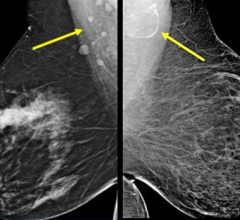May 3, 2011 — A guideline document from the American Society of Echocardiography (ASE) which makes recommendations for the use of current imaging modalities in optimizing the management of patients with hypertrophic cardiomyopathy (HCM) has been published in the May issue of JASE, the Journal of the ASE. “The document includes the recommendations for the role of imaging in the diagnosis and followup of patients with hypertrophic cardiomyopathy, including risk stratification for sudden cardiac death,” explained writing group chair Sherif F. Nagueh, M.D., FASE, professor of medicine at Weill Cornell Medical College and the medical director of the Methodist DeBakey Heart & Vascular Center Echocardiography laboratory in Houston, Texas.
Advances in cardiac imaging have brought an increasing complexity of imaging choices for busy clinicians to consider. Clinicians can image the heart using ultrasound, magnetic resonance imaging (MRI), computed tomography (CT) or nuclear cardiology techniques. Physicians need to make appropriate choices among the imaging options to avoid duplicate testing or getting studies which don’t address the clinical question.
Unlike many guideline documents, which focus on a specific type of cardiac imaging, this paper brings together experts across all types of cardiac imaging to focus on a specific clinical disorder. This guideline reviews the strengths and weakness of the different ways to image the heart in patients with HCM. By taking a critical look at the most commonly used cardiac imaging modalities and most common clinical questions in patients with HCM, this guideline should prove to be a valuable resource.
HCM is the most common genetic cardiomyopathy, affecting about 0.2 percent of people across multiple geographies and ethnicities. While a majority of patients with HCM have a near normal lifespan, adverse outcomes, including life-limiting symptoms and sudden cardiac death, occur in some people.
The recommendations were endorsed by the American Society of Nuclear Cardiology, Society for Cardiovascular Magnetic Resonance and Society of Cardiovascular Computed Tomography. The full document is available at www.asecho.org/guidelines.
The American Society of Echocardiography (ASE) is a professional organization of physicians, cardiac sonographers, nurses and scientists involved in echocardiography, the use of ultrasound to image the heart and cardiovascular system. The organization was founded in 1975 and is the largest international organization for cardiac imaging.
For more information: www.asecho.org


 May 17, 2024
May 17, 2024 








